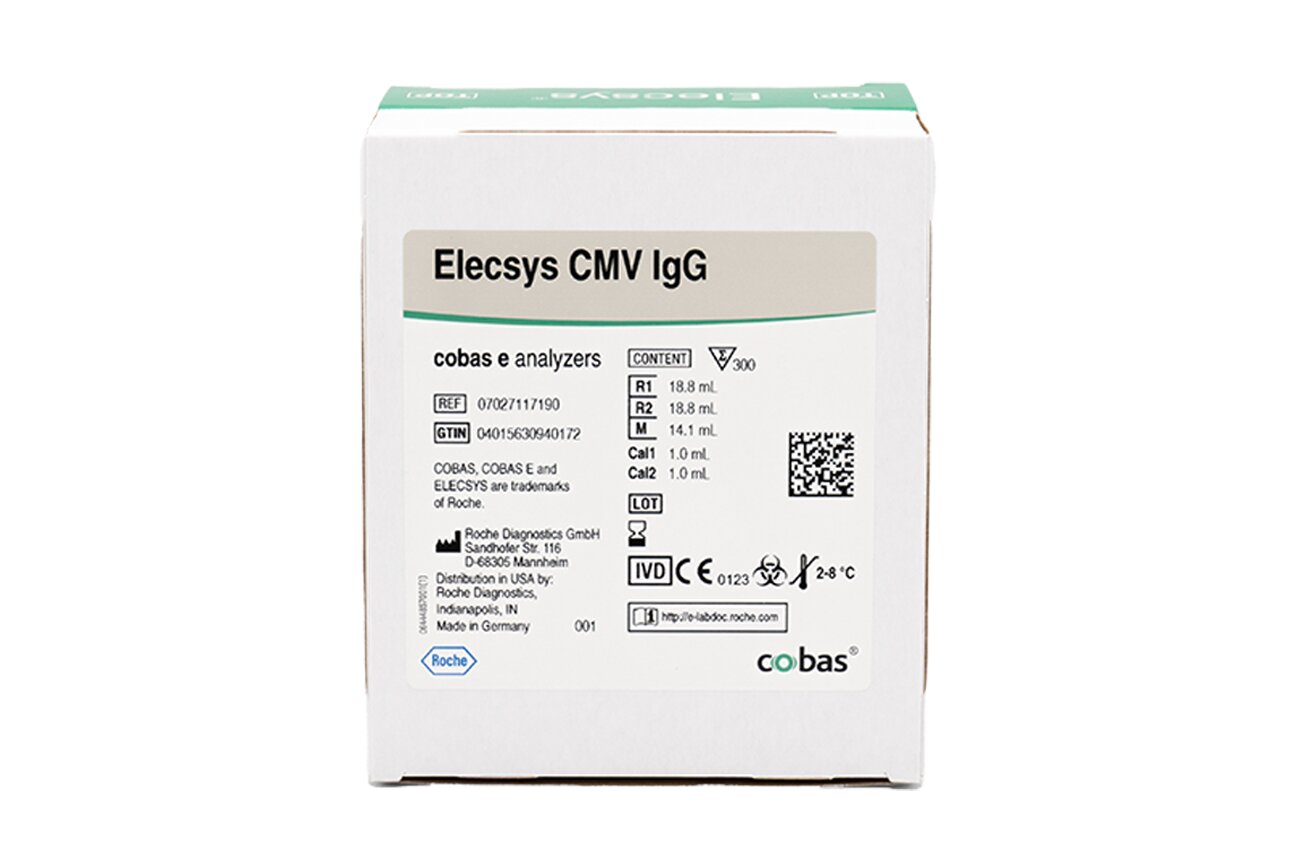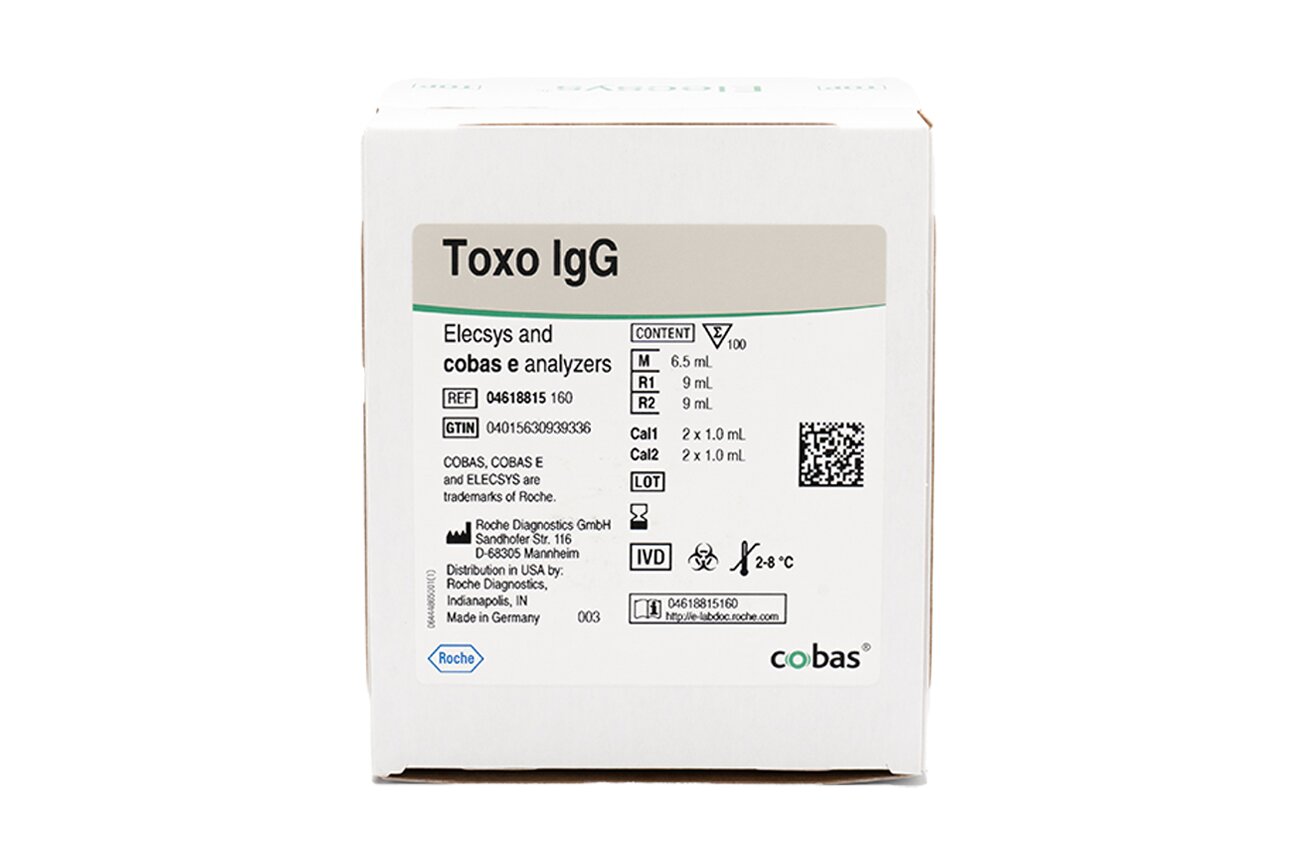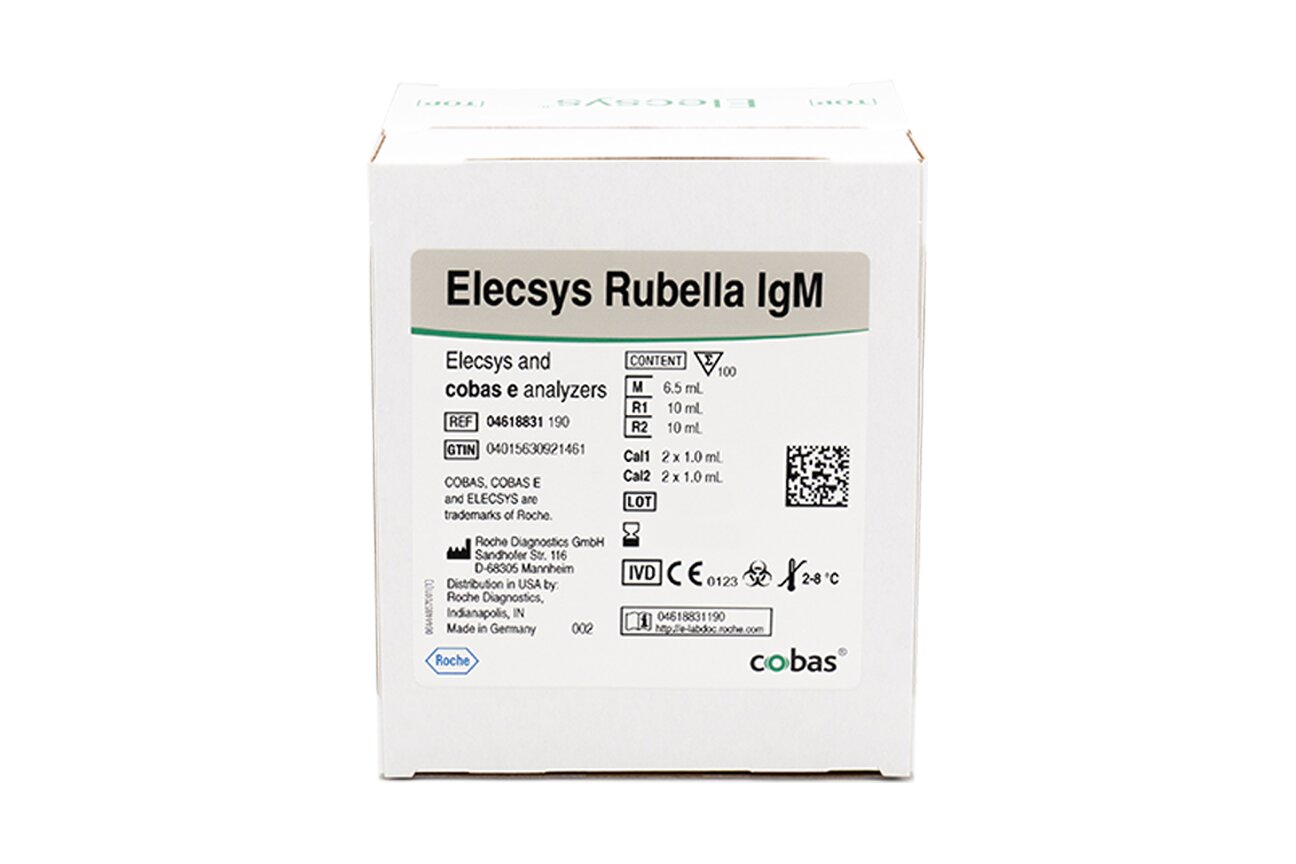For localized information and support, would you like to switch to your country-specific website for {0}?
Shining a light on congenital infections
Committed to safeguarding healthy starts
Congenital infections are infections that can be transmitted from mother to child during pregnancy, delivery, or even after birth. A well-recognized group of these is the TORCH infections—toxoplasmosis, other infections (such as HIV, hepatitis B, syphilis, and Zika), rubella, cytomegalovirus (CMV), and herpes simplex virus (HSV). These infections, as well as additional congenital pathogens, have the potential to adversely affect fetal development and long-term neurodevelopmental outcomes.1,2 Diagnostic tools to help identify women at risk of transmitting an infection to their baby are crucial, as early detection and intervention can mitigate these risks and improve health outcomes.3
At Roche, our dedication to patient-centric care drives us to continuously enhance our diagnostic portfolio for congenital infections. Our comprehensive offering contains qualitative and quantitative assays, known as the TORCH panel, and our integrated diagnostic solutions are specifically designed to meet the unique throughput requirements and disease areas related to congenital infections, ensuring effective management and reduction of their prevalence.4
Roche’s team of experts is committed to supporting your laboratory efforts, ultimately contributing to better health outcomes for newborns and advancing global health objectives.
Significant impact of congenital infections
Congenital infections are major contributors of perinatal morbidity and mortality. It is estimated that up to half of all perinatal deaths globally, and around 35% of neonatal deaths, are due to a TORCH infection.5,6 Congenital infections like hepatitis B and HIV are well recognized, but their prevalence is low in comparison to CMV or Toxoplasma, which can also have severe consequences for the unborn child:
Toxoplasma gondii
Toxoplasma gondii is a protozoan parasite that is primarily transmitted through the consumption of undercooked meat or exposure to cat feces. It can result in toxoplasmosis, which may present as fever and fatigue in the mother. If passed to a fetus or infant, toxoplasmosis may cause inflammation of the choroid and retina in the eye (i.e., chorioretinitis), a buildup of fluid in the brain (i.e., hydrocephalus), rash, and intracranial calcifications. Seroprevalence of Toxoplasma gondii varies across countries, but it is estimated that up to 30% of the global population is infected. The numbers of live births with congenital infections of Toxoplasma gondii range from 1 to 10 per 10,000.7
HIV
Mother-to-child HIV transmission can happen during pregnancy, labor, delivery, or breastfeeding, and occurs at a rate of 15% to 45% with no intervention. However, effective interventions can reduce this rate to less than 5%.8 Research has shown that babies with HIV are more likely to survive if they begin treatment before they are three months old.9 Without treatment, about one-third of children living with HIV die by their first birthday, and half die by their second birthday.10 Early identification of HIV infection in newborns is essential to initiate treatment promptly. Although the number of people acquiring HIV has reduced in recent years, 120,000 children acquired it in 2023, and 76,000 children died from HIV related causes.11
Syphilis
Syphilis is caused by the bacterium Treponema pallidum. It can be transmitted from mother to fetus during pregnancy or birth. When transmitted to the fetus during pregnancy, the resulting congenital syphilis can lead to fetal death. If the fetus survives, congenital syphilis may cause craniofacial malformations, rash, and deafness. Each year, globally, an estimated 2 million pregnancies are affected, and up to 60 % of syphilis infected pregnant women show adverse pregnancy outcomes. The World Health Organization (WHO) recommends that all women be tested at their first antenatal visit and in some cases again in the third trimester.12
Hepatitis B
Hepatitis B is a common infection worldwide, with an estimated 1.2 million new infections each year. The viral infection attacks the liver and can cause chronic disease. It is most commonly transmitted from mother to child during birth and delivery. Hepatitis B infection acquired in adulthood leads to chronic hepatitis in less than 5% of cases, whereas infection in infancy and early childhood leads to chronic hepatitis in about 95% of cases. The WHO recommends routine testing for hepatitis B among all pregnant women to provide the opportunity to take measures for the prevention of transmission.13
Rubella
In the case of rubella, a mother may become infected if they are exposed to the rubella virus through direct contact with infected bodily fluids, including saliva, mucus, or air droplets. In the mother, rubella may present with mild symptoms such as swollen lymph nodes or rashes. However, rubella that is transmitted to a developing fetus during pregnancy can result in congenital rubella syndrome (CRS), characterized by deafness, clouding of the eyes, rash, and heart defects. Although a vaccine is available, there are still thousands of cases worldwide each year, and if a woman is infected with rubella in early pregnancy, she has a 90% chance of passing it on to her baby. It is the leading vaccine-preventable cause of birth defects worldwide, with an estimated 100,000 babies born with congenital rubella syndrome each year.14
Cytomegalovirus (CMV)
Like rubella, CMV can be transmitted through direct contact with infected bodily fluids, including saliva, tears, mucus, semen, and vaginal fluids. The seroprevalence of CMV is about 83% in the general population and 86% among women of childbearing age.15 In developing countries, the incidence of congenital CMV infection ranges from 1% to 5% of births.16 Around 1 in 200 babies are born with congenital CMV infection, which can cause significant complications such as hearing loss, neurodevelopmental issues, and even fetal death. In the developed world, CMV is the leading infectious cause of childhood hearing loss and neurodevelopmental abnormalities.17
Herpes simplex virus (HSV)
The herpes simplex virus is very contagious, and types 1 and 2 (HSV-1 and HSV-2) are prevalent infections worldwide. HSV-1 is mainly transmitted through the exchange of oral secretions (e.g., kissing, sharing utensils, sharing drinks, etc.) and commonly leads to oral herpes, characterized by cold sores. HSV-2 is a sexually transmitted disease and primarily causes genital herpes. HSV-1 seroprevalence reaches approximately 64% in the global population, whereas HSV-2 seroprevalence is around 13%. Although rare, with an estimated 10 cases per 100,000 live births, neonatal herpes, primarily transmitted from an infected mother during childbirth, can lead to serious consequences, including neurological damage and death. Infections with either HSV type can be recurrent, imposing a long-term burden on individuals and healthcare systems.18
The hidden challenge of congenital infections
Advancements in prenatal care and testing have improved our ability to manage congenital infections, yet they remain a significant concern for healthcare systems worldwide, as numbers remain high. Since the early 2000s, the incidence of congenital CMV, HSV, and varicella-zoster virus (VZV) diagnosed in neonates has increased by about 300%.19
Clinical diagnosis of these infections can be unreliable as they are often asymptomatic or mild in presentation in the mother, yet highly transmissible to the child.15 Fortunately, the development of innovative diagnostic techniques has enabled early detection, and the majority of congenital infections can be managed and treated effectively with timely medical care, reducing the risk of serious long-term effects and improving the quality of life for affected individuals.
Roche has a proud history of delivering advanced testing that provides increasingly precise information to help save lives. These advancements are helping healthcare professionals address women's health challenges, giving them the ability to provide better care and peace of mind to patients when welcoming a new life into the world.
Featured products
Benefits of Roche diagnostic solutions for managing congenital infections
Best-in-class diagnostic solutions
From initial screening to post-natal follow-up, laboratories serve as a lifeline for those suspected of congenital infection. Rapid and precise diagnostic solutions play a vital role in initiating appropriate treatments and minimizing long-term health complications. As healthcare practices become more advanced globally, it is essential to ensure that accurate diagnostics are accessible to facilitate better patient care:
- Roche’s fully automated platforms and standardized processes help laboratories minimize human error and better manage the growing demand for testing
- Continuous advancements in testing strategies support comprehensive management plans to address co-infections and other associated risks
- Precise diagnostics and reliable results enable healthcare providers to tailor treatments specific to the infection, ensuring optimal care
As a leader in in-vitro diagnostics, Roche is committed to meeting the needs of patients and developing best-in-class diagnostic solutions to help laboratories effectively support the needs of their customers and communities.
Equipping laboratories for reliable and effective congenital infection testing
Antenatal screening is one of the most important preventive measures for congenital infection, as a fast and simple blood test can support a timely diagnosis of an often asymptomatic infection.
Roche’s congenital infections menu, the Elecsys® TORCH panel, includes assays for the detection of the most common infections that may affect fetuses and/or newborns, and that can be easily prevented through screening, implementing hygienic measures, vaccination (if available), or applying treatment in case infection is confirmed.
Our Elecsys® panel for congenital infections provides:
- Broad panel of assays, inclusive of IgG avidity assays for toxoplasmosis and CMV
- Elecsys® HIV Duo, Elecsys® HV combi PT
- Elecsys® Syphilis
- Elecsys® HBsAg
- Elecsys® HCV Duo, Elecsys® Anti-HCV
- Elecsys® Toxo IgM, Elecsys® Toxo IgG, Elecsys® Toxo IgG avidity
- Elecsys® Rubella IgM, Elecsys® Rubella IgG
- Elecsys® CMV IgM, Elecsys® CMV IgG, Elecsys® CMV IgG avidity
- Elecsys® HSV-1 IgG, Elecsys® HSV-2 IgG
- Elecsys® Chagas
- Optimized assay design to reduce interferences and detection of long-lasting IgM
- Recombinant antigens selected for high sensitivity and specificity
- Highly sensitive and specific assays for early diagnosis and to detect low levels IgGs
By integrating Roche diagnostic solutions, healthcare providers can facilitate early detection, effective intervention, and thorough patient monitoring, which is crucial for improving the health outcomes of infants.
Partnering to support patient care
At Roche, we recognize the importance of investing in technologies that foster long-term partnerships and provide tailored solutions for diverse healthcare settings. From strategic assay development and flexible system concepts to an established global infrastructure and efficient logistics, Roche is helping to ensure the delivery of timely, accurate results, through:
- Roche 360° Service Solutions: Our meticulously designed service program anticipates your needs and supports you in the planning and design, through to the installation, training, repair, and maintenance, and continuous improvement phases of your Roche solutions to help you achieve your goals
- Collaboration and Research: Ongoing research initiatives contribute to the development of innovative diagnostic tools, enhancing the reliability and efficiency of congenital infection management
- Consultancy expert access: Our healthcare consultants collaborate with you to identify opportunities for integrating data and resources throughout your organization. Our goal is to help you optimize performance, add value, and adapt to evolving health policies, ultimately enhancing patient care and business outcomes
- Enabling access: Established infrastructure and efficient logistics that ensure our partners around the world have access to essential machines, reagents, and consumables to support local needs
References:
- Han L, Li R, Xiong W et al. Prevalence of preconception TORCH infections and its influential factors: evidence from over 2 million women with fertility desire in southern China. BMC Women's Health. 2023;23:425.
- Goldenberg RL, McClure EM, et al. Infection-related stillbirths. Lancet. 2010;375(9724):1482-90.
- Centers for Disease Control and Prevention. [Internet; cited 2025 Jun 23]. Available from: https://archive.cdc.gov/#/details?url=https://www.cdc.gov/ncbddd/birthdefects/surveillancemanual/chapters/chapter-5/chapter5.html
- F. Hoffmann-La Roche. Innovation in fighting infectious disease. 2018. PP-US-11276.
- Neu N. et al. TORCH Infections. Clinics in Perinatology. 2015 March;42(1):77–103.
- Darmstadt G. et al. (2011) Neonatal Infections: A Global Perspective chapter 2, Infectious Diseases of the Fetus and Newborn (Seventh Edition), W.B. Saunders, 24-51.
- Montoya JG, Liesenfeld O. Toxoplasmosis. Lancet. 2004 Jun;363(9425):1965-76.
- World Health Organization: Mother-to-child transmission of HIV. [Internet; cited 2025 Jun 23]. Available from: https://www.who.int/teams/global-hiv-hepatitis-and-stis-programmes/hiv/prevention/mother-to-child-transmission-of-hiv
- Violari A, et al. Antiretroviral therapy initiated before 12 weeks of age reduces early mortality in young HIV-infected infants: evidence from the Children with HIV Early Antiretroviral Therapy (CHER) Study. Presented at 4th IAS Conference on HIV Pathogenesis, Treatment and Prevention; July 2007 22-25; Sydney, NSW, Australia. Abstract #WESS103.
- United Nations AIDS: The GAP Report. [Internet; cited 2025 Jun 23]. Available from: https://www.unaids.org/sites/default/files/media_asset/UNAIDS_Gap_report_en.pdf
- World Health Organization. HIV data and statistics. [Internet; cited 2025 Jun 23]. Available from: https://www.who.int/teams/global-hiv-hepatitis-and-stis-programmes/hiv/strategic-information/hiv-data-and-statistics
- World Health Organization. Syphilis Fact Sheet. [Internet; cited 2025 Jun 23]. Available from: https://www.who.int/news-room/fact-sheets/detail/syphilis
- World Health Organization. Hepatitis B Fact Sheet. [Internet; cited 2025 Jun 23]. Available from: https://www.who.int/news-room/fact-sheets/detail/hepatitis-b
- World Health Organization. Rubella Fact Sheet. [Internet; cited 2025 Jun 23]. Available from: https://www.who.int/news-room/fact-sheets/detail/rubella
- Zuhair M, et al. Estimation of the worldwide seroprevalence of cytomegalovirus: A systematic review and meta-analysis. Reviews in Medical Virology. 2019;29(3):e2034.
- Pontes KFM, et al. Cytomegalovirus and Pregnancy: A Narrative Review. J. Clin. Med. 2024;13(2):640.
- Manicklal S, et al. The "silent" global burden of congenital cytomegalovirus. Clin Microbiol Rev. 2013 Jan;26(1):86-102.
- World Health Organization. Herpes Simplex Virus Fact Sheet. [Internet; cited 2025 Jun 23]. Available from: https://www.who.int/news-room/fact-sheets/detail/herpes-simplex-virus
- Kadambari S, et al. Congenital viral infections in England over five decades: a population-based observational study. Lancet Infect Dis. 2020;20(2):220-229.



